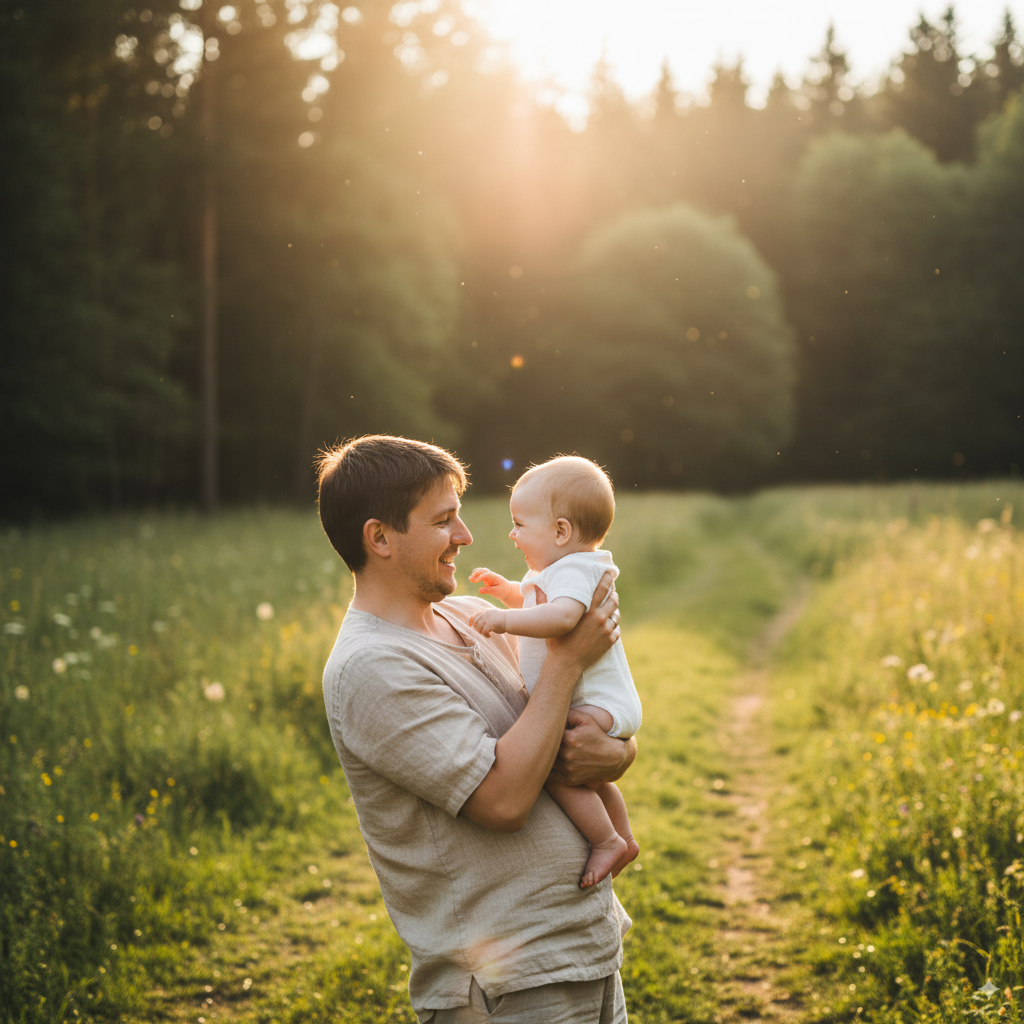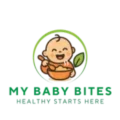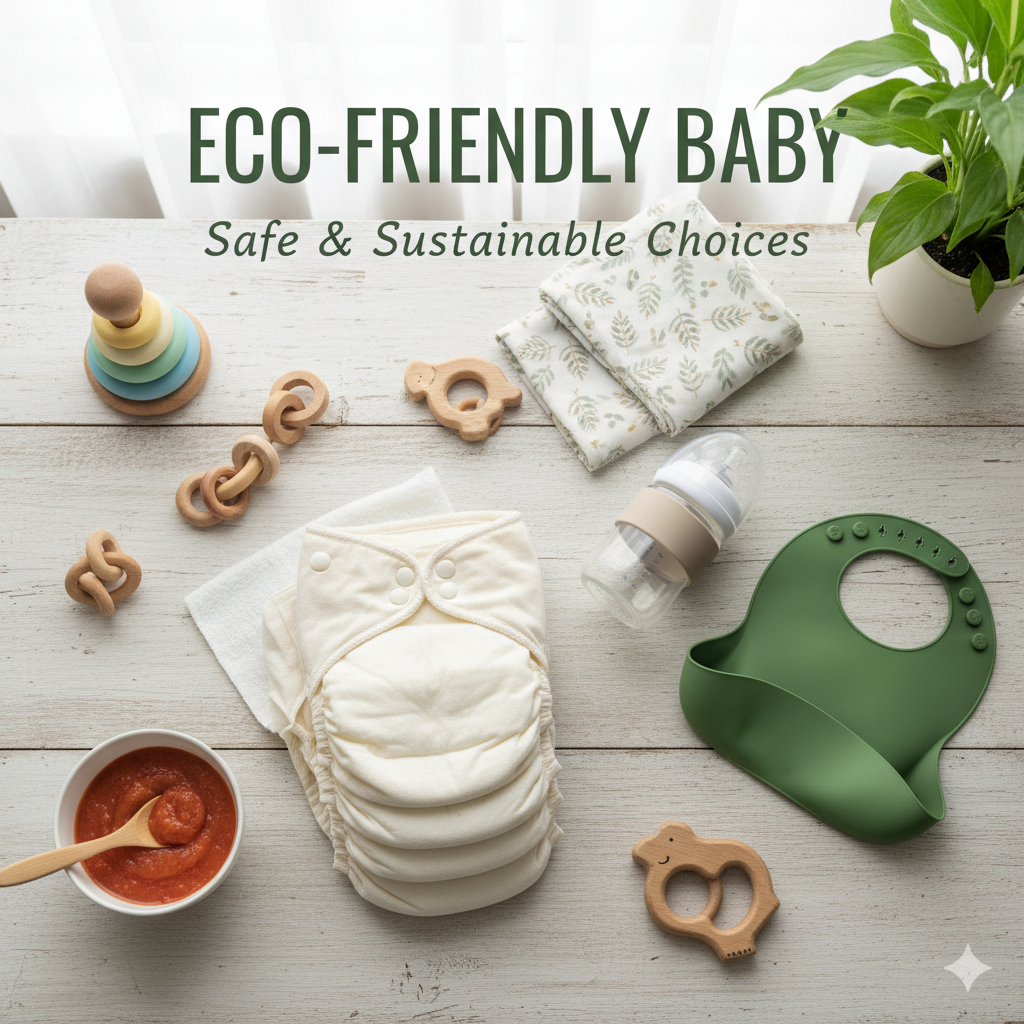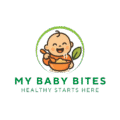Parenting today isn’t just about keeping your baby happy and healthy—it’s also about protecting the planet they’ll grow up in. Every choice we make, from the diapers we buy to the toys we choose, has a lasting impact on both our child’s well-being and the environment.
Eco-friendly baby products give parents the power to raise their children safely while reducing toxins, waste, and pollution. In this guide, we’ll explore why sustainable products matter, how to choose them, the best options for 2025, and practical tips for making the switch.
📑 Table of Contents
Why Eco-Friendly Baby Products Matter
Baby Safety: The Dangers of Hidden Chemicals
Environmental Impact: Reducing Waste and Pollution
Peace of Mind: Investing in a Healthier Future
The Main Types of Eco-Friendly Baby Products
- Diapers & Wipes
- Baby Food & Feeding Essentials
- Clothing & Bedding
- Toys & Accessories
- Nursery Furniture
Key Certifications to Look For
Cost of Eco-Friendly Products: Long-Term Savings
Sustainable Parenting Tips: How to Start Small
Top Eco-Friendly Baby Products in 2025
FAQs About Eco-Friendly Baby Products
Why Eco-Friendly Baby Products 2025
1. Baby Safety: The Dangers of Hidden Chemicals
Traditional baby items often contain plastics, harsh chemicals, or synthetic dyes that irritate delicate skin. Eco-friendly alternatives are free from these toxins, keeping your baby safe and comfortable.
Chemicals to Avoid in Baby Products:
- BPA (Bisphenol A): Linked to hormone disruption.
- Phthalates: Found in toys & lotions; known endocrine disruptors.
- PVC: Releases toxins during production & disposal.
- Formaldehyde: Sometimes in shampoos, lotions, or mattresses.
- Parabens: Preservatives that mimic estrogen.
That’s why parents in 2025 are choosing eco-friendly baby products over traditional ones.
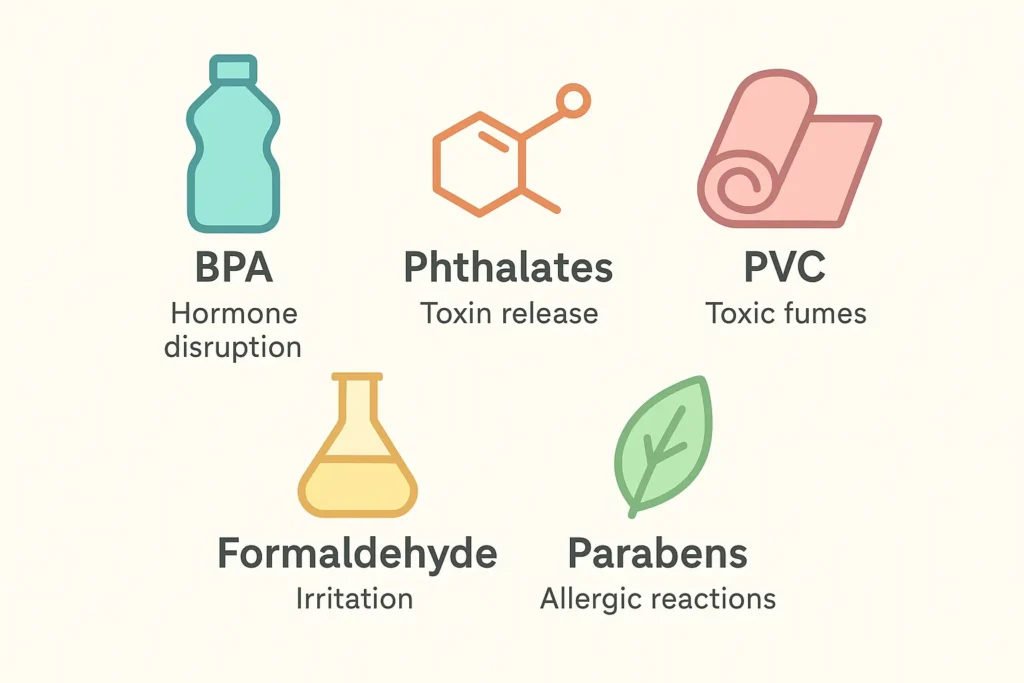
2. Environmental Impact: Reducing Waste & Pollution
A baby uses 2,500–3,000 disposable diapers in the first year alone. Each one takes up to 500 years to decompose. Add plastic toys, synthetic clothing, and single-use wipes—and you can see why sustainable swaps matter.
Synthetic clothing and plastic toys create long-lasting landfill waste. Switching to sustainable products lowers your family’s carbon footprint.
EPA – Reducing Household Waste
3. Peace of Mind: A Healthier Future
Choosing eco-friendly products isn’t just about safety now—it’s about creating a healthier planet for your child’s future. Every swap, big or small, adds up to meaningful change.
Types of Eco-Friendly Baby Products in 2025
Diapers & Wipes
Cloth diapers remain one of the most popular eco-friendly baby products in 2025.
- Cloth Diapers: Reusable, gentle, and reduce landfill waste.
- Biodegradable Diapers: Convenient + lower environmental footprint.
- Reusable Wipes: Made from organic cotton or bamboo.
Baby Food & Feeding Essentials
- Glass Bottles: BPA-free, durable, sterilizable.
- Silicone Bottles: Flexible and shatterproof.
- Stainless Steel Bottles: Long-lasting and temperature resistant.
- Reusable Food Pouches: Cut packaging waste.
- Food-Grade Silicone Bibs & Utensils: Safe and washable.

Clothing & Bedding
- Organic Cotton Bodysuits (GOTS-certified)
- Bamboo Swaddles: Soft, breathable, hypoallergenic.
- Non-Toxic Crib Mattresses: Free from flame retardants.
Toys & Accessories
- Wooden Rattles & Teethers: Durable and safe.
- Natural Rubber Pacifiers: Plastic-free and non-toxic.
- Recycled Plastic Toys: Made from sustainable materials.
Nursery Furniture
- Solid Wood Cribs (FSC-certified): Non-toxic and safe.
- Eco-Friendly Paints: Low-VOC, safer for indoor air.
- Second-Hand Furniture: Budget-friendly + sustainable.
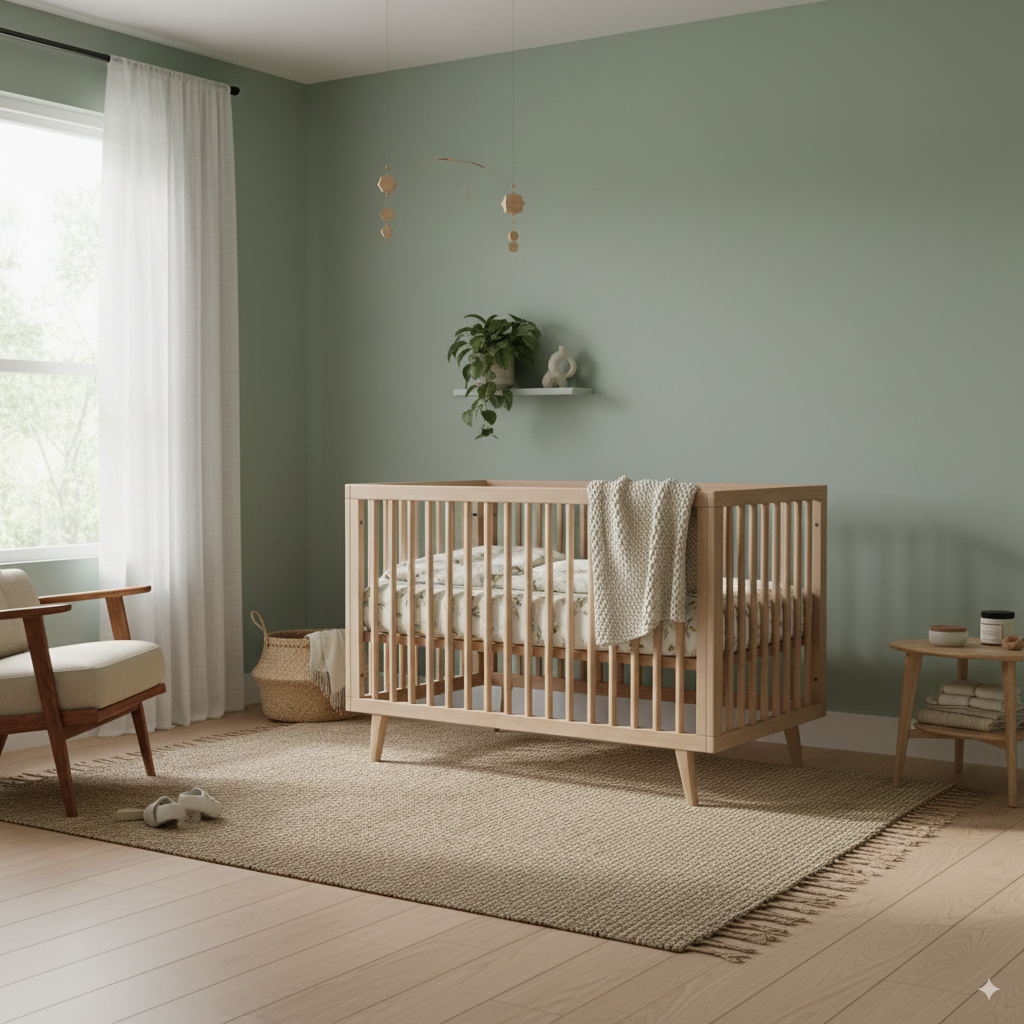
✅ Key Certifications to Look For
When shopping for eco-friendly baby products in 2025, look for these trusted certifications.
- GOTS (Global Organic Textile Standard): Organic textiles with strict standards.
- USDA Organic: 95%+ organic ingredients in food/lotions.
- OEKO-TEX Standard 100: Certified free from harmful substances.
- EcoCert: Verifies natural and organic cosmetics.
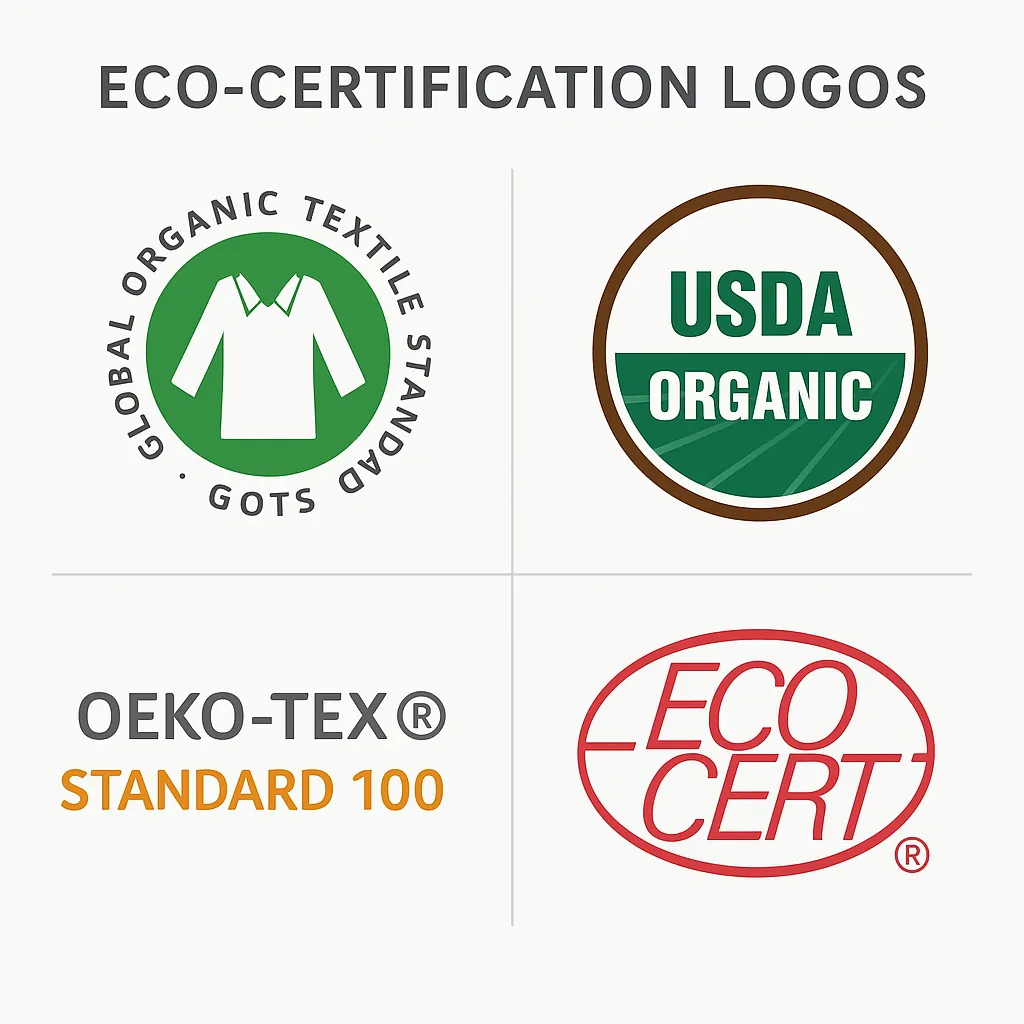
💰 Cost of Eco-Friendly Products: Long-Term Savings
Switching to eco-friendly baby products 2025 may seem expensive upfront, but they save money over time.
- Cloth diapers save $2,000–$3,000 over 2–3 years.
- High-quality items can be reused for siblings or resold.
- Fewer doctor visits from skin irritation = hidden savings.
🌿 Sustainable Parenting Tips: How to Start Small
- Use cloth diapers at home, disposables only when traveling.
- Make homemade baby food from organic veggies.
- Buy second-hand clothes and toys.
- Encourage family & friends to give sustainable gifts.
⭐ Top Eco-Friendly Baby Products in 2025
Here are a few recommended essentials (add affiliate links here):
| Product | Type | Why It’s Eco-Friendly | Price | Link |
|---|---|---|---|---|
| Brand A Glass Bottle | Feeding | Durable, BPA-free | $XX | [Shop Now] |
| Brand B Cloth Diapers | Diapering | Reusable, organic cotton | $XX | [Shop Now] |
| Brand C Wooden Toys | Playtime | FSC-certified, non-toxic | $XX | [Shop Now] |

❓ FAQs About Eco-Friendly Baby Products
Q: Are eco-friendly baby products safer?
Yes. They avoid harmful chemicals like BPA, PVC, and synthetic dyes.
Q: Do eco-friendly products cost more?
Sometimes—but they last longer and save money over time.
Q: How do I know if a product is truly eco-friendly?
Look for certifications like GOTS, USDA Organic, OEKO-TEX.
Q: Can I be eco-friendly on a budget?
Absolutely. Buy second-hand, DIY wipes, and use cloth diapers part-time.
🌎 Final Thoughts
Eco-friendly baby products 2025 are more than a trend—they’re an investment in your baby’s health and the planet’s future.
Start small, swap one product at a time, and watch your impact grow. By choosing sustainable options, you’re giving your baby a safe start and protecting the world they’ll grow up in. 🌱👶
